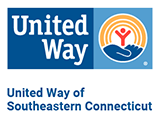As I drove to the United Way of Southeastern Connecticut office this morning, half-listening to the radio as I slowly woke up, I heard a fact that made me sit up and pay attention: a new report from the Economic Policy Institute (EPI), ranks Connecticut 3rd out of all 50 states in terms of income inequality between the top 1% and remaining 99% of residents. While I’d heard before that economic inequality is particularly stark in our state, I didn’t realize just how large the gap is between the richest of us and the rest of us. When I got to my desk I decided to dig a little deeper. Here are some highlights from the report:
Inequality at the national level
- Minimum annual income to be in the top 1%: $421,926
- Average annual income of the top 1%: $1,316,985
- Average annual income of the bottom 99%: $50,107
- Ratio of top 1% to bottom 99%: 26.3x
Inequality in Connecticut
- Minimum annual income to be in the top 1%: $700,800
- Average annual income of the top 1%: $2,522,806
- Average annual income of the bottom 99%: $67,742
- Ratio of top 1% to bottom 99%: 37.2x
- This means that the top 1% take home 27.3% of all the income in Connecticut
Inequality in New London County
- Average annual income of the top 1%: $822,069
- Average annual income of the bottom 99%: $56,443
- Ratio of top 1% to bottom 99%: 14.6x
- New London county comes in at 1147th out of 3061 counties in the U.S., putting us in the top 37% in terms of inequality
These statistics are interesting, but it’s important to remember that these numbers are averages, so individual families’ incomes may be much different than what we see here. And they may not necessarily tell the full story- for example, while Connecticut’s average income for the bottom 99% is higher than the national average, our cost of living is also higher. In fact, some of my previous blog posts (see ‘Understanding ALICE,’) have alluded to the fact that 38% of Connecticut households are unable to afford a budget that covers essentials such as childcare, food, housing, transportation and healthcare. And when it comes to New London county specifically, it’s estimated that 9% of households in New London County fall below the poverty level, and 38% fall under the combined below poverty and ALICE (Asset Limited, Income Constrained, Employed) level. That means that more than 1 in 3 of your neighbors, friends, and family in the area are struggling every day to make ends meet.
It’s all a lot to take in, and sometimes I get overwhelmed thinking about the huge wealth gaps that exist within our own small state. It can seem like a problem too large to handle, and I have to remind myself that while these facts are sobering, it’s not hopeless. Sometimes a comparatively small amount of assistance, be it through a food pantry, education program, or healthcare initiative, can make the difference that helps someone get back on their feet. That’s why United Way invests in our community from the ground up, supporting local programs and providing tools that people can use to succeed.
Live United,
Caitlin
